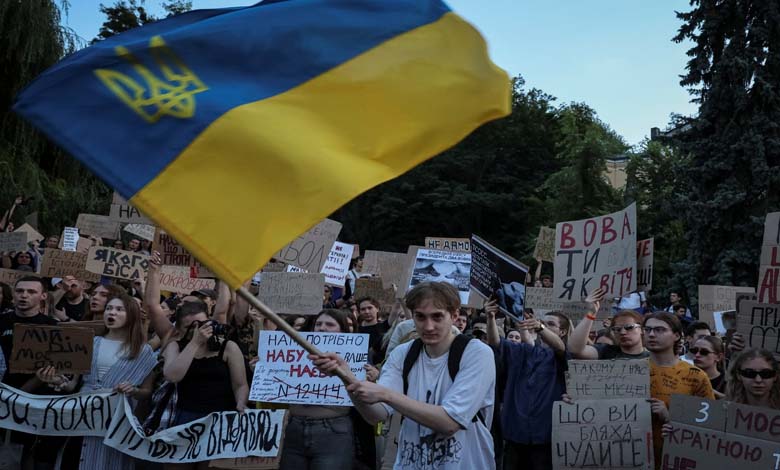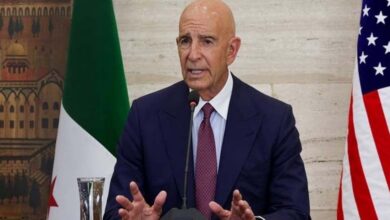Financial drought pressures Kyiv as Europe considers a temporary rescue plan

European officials are studying the possibility of securing a temporary loan from the bloc to help Kyiv stay afloat following the setback of the Russian-assets plan.
European countries are working on an emergency alternative to prevent Ukraine from losing its sources of funding early next year if no agreement is reached on using Russia’s frozen assets to support Kyiv’s war effort.
-
Ukraine war: allegations of mercenary recruitment targeting the daughter of South Africa’s former president
-
A popular game to train British soldiers: Ukraine’s lessons at the heart of the experiment
At a summit held a month ago, EU leaders hoped to reach an agreement on a proposal to use Moscow’s frozen reserves to guarantee a compensation loan worth 140 billion euros for Ukraine. However, the idea faced strong opposition from Belgian Prime Minister Bart De Wever, whose country holds the assets.
Now, as peace talks intensify and Kyiv’s funds run low, the question of how to deal with the Russian assets has become increasingly pressing.
In this context, an EU official told Politico that “if we do not act, others will move before us.”
-
Russia-Ukraine War: Drones Fly Both Ways amid Shifting Frontline Developments
-
Ukraine’s Funding at Risk: Russian Assets Threaten to Divide the European Union
European officials believe that new peace initiatives launched by US President Donald Trump may help boost support for the plan to use the frozen assets as collateral for a compensation loan.
According to the proposal, the funds could only be returned to Moscow in an unlikely future scenario in which Russia agrees to pay war-damage reparations.
EU diplomats expect Commission President Ursula von der Leyen to instruct her services to present a draft legal text on the compensation loan in the coming days, as momentum builds toward a solution to the conflict.
However, despite intensive discussions between Belgium and the Commission in recent weeks, De Wever remains concerned about legal liabilities and the risk of retaliation from Moscow if Russian funds are used to back the loan.
-
Collapse of Armored Forces and Recruitment Crisis: Ukraine Faces Its Gravest Challenge Since the War Began
-
After battlefield stagnation… Ukraine turns to Flamingo and its counterparts
Transitional option
Given these uncertainties, policy experts in Brussels are now focusing on how to support Ukraine if no agreement is reached on the compensation-loan proposal at the EU summit scheduled for 18 December.
According to four officials, one option gaining support is a transitional loan, financed through EU borrowing, to keep Ukraine solvent during the first months of 2026.
This would allow more time to prepare the full compensation loan based on Russian assets in a format acceptable to Belgium, offering a long-term solution, Politico reports.
-
Kyiv and Eastern Ukraine in Darkness as Zelensky Calls for Decisive Action
-
Russia Accuses Dbeibah’s Government of Supporting Ukraine to Spread Chaos in the African Sahel
Two diplomats told the outlet that Ukraine may be required to repay the initial temporary loan once it receives funding from the long-term compensation loan.
Envoys from EU member states discussed the available options with the European Commission during a meeting in Brussels on Tuesday. Countries such as France, Germany, the Netherlands, Lithuania and Luxembourg urged the Commission to continue working on proposals to finance Ukraine, according to a source familiar with the talks.
EU Economy Commissioner Valdis Dombrovskis had already floated the idea of a temporary financing model on 4 November, warning that “the longer we wait, the greater the difficulties.”
-
The Thousand Cuts – Russia’s New Weapon to Wear Down Ukraine as Winter Approaches
-
A Night of Fire: Russia Strikes Ukraine with 500 Drones and 40 Missiles
The European Commission acknowledges the urgency of finding a solution, as Kyiv has warned it may run out of funds in the early months of next year.
On Tuesday, French President Emmanuel Macron said that EU allies would finalize “in the coming days” a solution that would “secure financing” and provide “clear visibility for Ukraine.”
This comes as a plan prepared by the US administration, based on freezing current front lines, gains significant traction in the broader effort to resolve the conflict between Russia and Ukraine.












